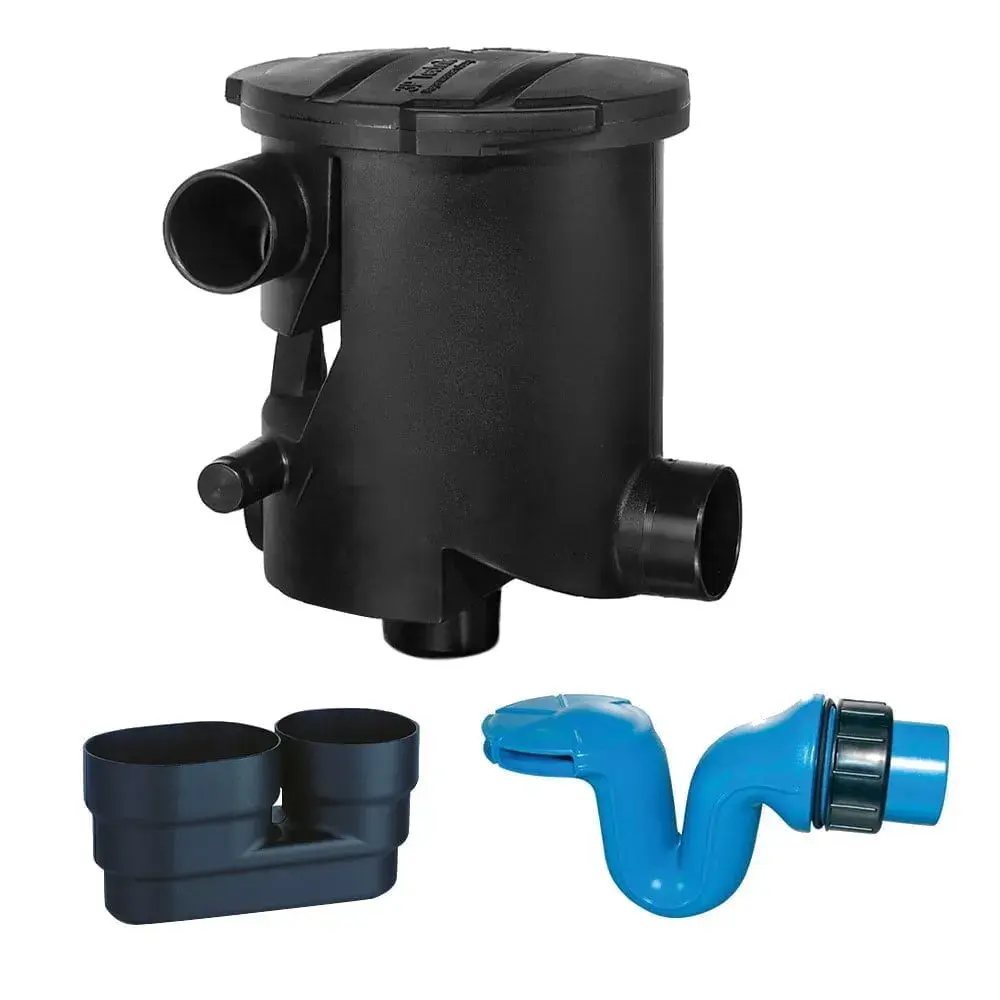Removing suspended solids from liquids is necessary for many processes in industrial wastewater treatment. Let’s Be Clear About Clarifiers – Clarifiers are settling tanks, often called settlers, in addition sometimes serve for thickening in which case they are termed thickeners.
Clarifiers usually feature a built-in mechanism for continuous removal of the solids deposited by sedimentation, concentrated impurities discharged from the bottom of the tank are known as sludge while the particles that float to the surface of the liquid are called scum. Usually, before a fluid goes to a clarifier, it undergoes coagulation and flocculation processes causing finely suspended particles to clump together to form larger and denser particles that settle more quickly. This eases separation, improving efficiency and conserving energy during the treatment cycle. Isolating particle components first using these processes may reduce the volume of downstream treatment operations.
Forces & Flow In Clarifiers
Two dominant forces act upon the solid particles in clarifiers – gravity and particle interactions. Too high a flow can lead to turbulence and potential flow short-circuiting. After coagulation, flocculation by mechanical paddles allows coagulates to form denser particles (flocs) to settle more easily. The stream then goes to the clarifier where the separation of clarified liquid from the solids and flocculated coagulate occurs by permitting the heavier and larger particles to settle to the bottom. The sludge requires regular removal and disposal generally through means of a tanker. The clarified liquid often is pumped to filters to eliminate any residual particles and then often onto a filter press.
Tanks are sized to give liquid optimal residence time and the economy favours using small tanks. However, if the liquid flow rate through the tank is too high, most particles will not have sufficient time to settle. Considerable attention is focused on reducing liquid inlet and outlet velocities to minimize turbulence and promote effective settling throughout available tank volume. Internal baffles prevent fluid velocities at the tank entrance from extending into the tank and overflow weirs uniformly distribute flow from liquid leaving the tank over a wide area of the surface to minimize resuspension of settling particles.
Design Of The Clarifier
Reducing the velocity increases the hydraulic retention time inside the clarifier for sedimentation and helps to avoid excessive turbulence and mixing. Promoting the effective settling of suspended particles means the inlet flow also should be distributed evenly across the entire cross-section of the settling zone inside the clarifier. As a rough indication, the settling zone’s volume often is around 30–40% of the total capacity of a clarifier.
The sludge formed from the settled particles at the bottom of the clarifier if left for an extended period can become viscous creating difficulties in its removal. This sludge should be drained properly from the bottom of the tank often through positive-displacement pumps.
Enduramaxx Clarifier Tanks
Enduramaxx manufactures clarifiers up to 12m3, as we as a number of mixers for Coagulation and Flocculation for water and wastewater treatment mixing applications, for more details on the products in the Let’s Be Clear About Clarifiers article please get in touch.
Posts By Topics
- Blog (303)
- Chemical Storage Tanks (118)
- Chemical Dosing Tanks (114)
- Chemical Tanks (114)
- Water Tanks (58)
- Rainwater Harvesting Tanks (43)
- Vertical Rainwater Tanks (31)
- Vertical Storage Tanks (31)
- Cone Bottom Tanks (19)
- Conical Cone Tanks (18)
- Rainwater Harvesting (17)
- Water Bowsers (15)
- Horizontal Tanks (14)
- Potable Water Tanks (13)
- Farming (9)
- Case Studies (8)
- Industrial Storage Tanks (7)
- Liquid Fertilser Storage Tanks (6)
- WRAS Approved Potable Tanks (6)
- Wine and Beer Production (6)
- Horizontal Transport Tanks (5)
- Microbrewery (5)
- Rainwater (5)
- Category 5 Break Tanks (4)
- Cider Production (4)
- Mixer Tanks (4)
- Molasses Tanks (4)
- Polyethylene tanks (4)
- Rainwater Filter Kits (4)
- SPECIALIST & BESPOKE TANKS (4)
- Bunded Tanks (3)
- Slimline Tanks (3)
- WRAS Approved (3)
- Clarification Tanks (2)
- Crosslinked Polymer Tanks (XLPE) (2)
- Fertiliser Tanks (2)
- Sump Tanks (2)
- Tank Installation (2)
- Water Butt (2)
- underground water tanks (2)
- ACCESSORIES & FITTINGS (1)
- ATV & UTV SPRAYING UNITS (1)
- Above Ground Effluent Tanks (1)
- Bespoke Tank Frames (1)
- Category 5 Turret (1)
- Caustic Soda Tanks (1)
- Closed Top Bunded Tanks (1)
- Craft beer (1)
- Effluent Tanks (1)
- Enduramaxx (1)
- Ferric Chloride Tanks (1)
- Fire Safety Regulations (1)
- Fire Sprinkler Water Storage Tanks (1)
- Industrial Water Tank (1)
- Open Top Bunded Tanks (1)
- Open Top Cone Tanks (1)
- Open Top Vertical Tanks (1)
- Polyethylene Potable Water Tanks (1)
- Polyvinylidene Fluoride (PVDF) Tanks (1)
- Polyvinylidene Fluoride Tanks (PVDF) (1)
- Pressure Washers (1)
- Pro Series Spot Sprayers (1)
- RWH (1)
- Sodium Hydroxide Storage Tanks (1)
- Sprayer Fill-up Tanks (1)
- Uncategorised (1)
- liquid fertiliser tank (1)
Sign up to the newsletter
enduramaxx.marketing
Related Posts
Vegetable Wastewater Processing & Treatment Tanks
Vegetable Wastewater Processing & Treatment Tanks are involved in many of the typical wastewater...
10m3 Conical Tanks for Yorkshire Bakery Wastewater Treatment
10m3 Conical Tanks for Yorkshire Bakery 10m3 Conical Tanks for Yorkshire Bakery –...
How to waste less water? | Enduramaxx - Manufacturers of Polyethylene Tanks
Water is a precious commodity that most of us take for granted. Wastewater, or wasted water, is...
Related Products
From £1,080.00 inc. VAT
£900.00 exc. VAT
From £1,344.00 inc. VAT
£1,120.00 exc. VAT
From £768.00 inc. VAT
£640.00 exc. VAT
£480.00 inc. VAT
£400.00 exc. VAT





